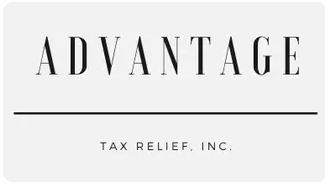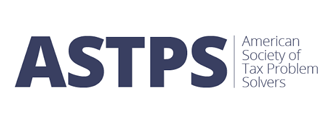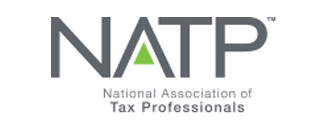The Truth About IRS Tax Liens and How to Remove Them
March 5, 2025
March 5, 2025
 An IRS tax lien is one of the most serious financial consequences of unpaid taxes. It can affect your credit, limit your financial freedom, and create a sense of uncertainty about your future. If you’ve received notice of a tax lien or are concerned about the possibility, understanding the process and your options is crucial. At Tax Advantage Relief, we help taxpayers navigate complex situations like these and find solutions that work for their unique circumstances.
An IRS tax lien is one of the most serious financial consequences of unpaid taxes. It can affect your credit, limit your financial freedom, and create a sense of uncertainty about your future. If you’ve received notice of a tax lien or are concerned about the possibility, understanding the process and your options is crucial. At Tax Advantage Relief, we help taxpayers navigate complex situations like these and find solutions that work for their unique circumstances.
What Is an IRS Tax Lien?
A tax lien is the government’s legal claim against your property—including real estate, personal belongings, and financial assets—when you fail to pay a tax debt. The lien ensures the IRS gets first priority over other creditors if you sell or refinance your assets.
How Tax Liens Work
Notice and Demand for Payment: The IRS will send you a bill outlining the amount owed. This is the first step in the lien process.
Failure to Pay: If you don’t pay the tax debt by the deadline, the IRS files a public document called a Notice of Federal Tax Lien.
Impact on Assets: The lien attaches to all your current and future assets, significantly affecting your financial stability.
How a Tax Lien Affects You
The repercussions of a tax lien can be far-reaching:
Credit Score Damage
: Tax liens can appear on your credit report, making it harder to secure loans or credit lines.
Asset Restrictions
: Selling or refinancing property becomes difficult, as the lien ensures the IRS is paid first.
Business Impacts
: If you own a business, the lien may attach to its assets, jeopardizing operations.
Ignoring a tax lien will not make it disappear. In fact, the longer you wait to address it, the worse the consequences become.
How to Remove an IRS Tax Lien
Removing a tax lien is possible, but it requires understanding your options and acting decisively. Here are some common ways to address a lien:
1. Pay the Tax Debt in Full
The most straightforward way to remove a lien is to pay off your tax debt completely. Once the debt is paid, the IRS will release the lien within 30 days. While this may not be feasible for everyone, it’s the quickest route to resolution.
2. Set Up an Installment Agreement
If you can’t pay the debt in full, an installment agreement allows you to make monthly payments over time. While the lien remains in place until the debt is paid off, the agreement prevents further collection actions.
3. Apply for an Offer in Compromise (OIC)
An Offer in Compromise lets you settle your tax debt for less than you owe. If the IRS accepts your OIC, they will release the lien once the agreed-upon amount is paid. Keep in mind that not everyone qualifies for this program.
4. Request a Discharge of Property
If you need to sell or refinance a specific asset, you can request a discharge of property from the lien. This removes the lien from that particular asset, allowing the transaction to proceed.
5. Subordination
Subordination doesn’t remove the lien but allows other creditors to take priority over the IRS. This can make it easier to secure a loan or mortgage.
6. Withdrawal of the Lien
In some cases, you may qualify for a withdrawal, which removes the public Notice of Federal Tax Lien. This option is available if you’ve paid your debt in full or are on a direct debit installment agreement.
How to Prevent a Tax Lien
The best way to deal with a tax lien is to prevent one from being filed in the first place. Here are some tips:
File Your Taxes on Time: Even if you can’t pay, filing on time helps avoid additional penalties.
Communicate with the IRS: If you’re struggling to pay, reach out to the IRS to discuss payment options.
Seek Professional Help: Working with a tax resolution expert can help you address your debt before it escalates.
Why Professional Help Matters
Navigating tax liens and IRS procedures can be overwhelming. A tax resolution professional has the experience and knowledge to:
Negotiate with the IRS
: They can help you secure favorable terms for payment plans or settlements.
Protect Your Assets
: An expert can advise on the best strategies to prevent asset seizures or other enforcement actions.
Save Time and Stress
: Dealing with the IRS can be time-consuming and frustrating. Let a professional handle the process for you.
Common Myths About IRS Tax Liens
There’s a lot of misinformation about tax liens, which can lead to unnecessary panic or inaction. Let’s debunk some common myths:
Myth: A Tax Lien Means You’ll Lose Your Property Immediately. Truth: A lien is a claim, not a seizure. While it’s serious, you won’t lose your property unless the IRS enforces the lien through a levy.
Myth: You Can’t Do Anything Once a Lien Is Filed. Truth: There are several ways to address and even remove a lien, as discussed above.
Myth: Tax Liens Disappear Over Time. Truth: Liens remain in place until the debt is paid or the statute of limitations expires, which can take up to 10 years or more.
Take Action Today
If you’re dealing with an IRS tax lien or want to prevent one, the time to act is now. Ignoring the issue will only make it worse, but with the right help, you can resolve your tax problems and move forward with confidence.
At Advantage Tax Relief, we’re here to provide the guidance and support you need. Call us at 630-773-3200
to schedule a free consultation. Let us help you take control of your tax situation and protect what matters most.

An IRS tax lien is one of the most serious financial consequences of unpaid taxes. It can affect your credit, limit your financial freedom, and create a sense of uncertainty about your future. If you’ve received notice of a tax lien or are concerned about the possibility, understanding the process and your options is crucial. At Tax Advantage Relief, we help taxpayers navigate complex situations like these and find solutions that work for their unique circumstances.
What Is an IRS Tax Lien?
A tax lien is the government’s legal claim against your property—including real estate, personal belongings, and financial assets—when you fail to pay a tax debt. The lien ensures the IRS gets first priority over other creditors if you sell or refinance your assets.
How Tax Liens Work
Notice and Demand for Payment: The IRS will send you a bill outlining the amount owed. This is the first step in the lien process.
Failure to Pay: If you don’t pay the tax debt by the deadline, the IRS files a public document called a Notice of Federal Tax Lien.
Impact on Assets: The lien attaches to all your current and future assets, significantly affecting your financial stability.
How a Tax Lien Affects You
The repercussions of a tax lien can be far-reaching:
Credit Score Damage
: Tax liens can appear on your credit report, making it harder to secure loans or credit lines.
Asset Restrictions
: Selling or refinancing property becomes difficult, as the lien ensures the IRS is paid first.
Business Impacts
: If you own a business, the lien may attach to its assets, jeopardizing operations.
Ignoring a tax lien will not make it disappear. In fact, the longer you wait to address it, the worse the consequences become.
How to Remove an IRS Tax Lien
Removing a tax lien is possible, but it requires understanding your options and acting decisively. Here are some common ways to address a lien:
1. Pay the Tax Debt in Full
The most straightforward way to remove a lien is to pay off your tax debt completely. Once the debt is paid, the IRS will release the lien within 30 days. While this may not be feasible for everyone, it’s the quickest route to resolution.
2. Set Up an Installment Agreement
If you can’t pay the debt in full, an installment agreement allows you to make monthly payments over time. While the lien remains in place until the debt is paid off, the agreement prevents further collection actions.
3. Apply for an Offer in Compromise (OIC)
An Offer in Compromise lets you settle your tax debt for less than you owe. If the IRS accepts your OIC, they will release the lien once the agreed-upon amount is paid. Keep in mind that not everyone qualifies for this program.
4. Request a Discharge of Property
If you need to sell or refinance a specific asset, you can request a discharge of property from the lien. This removes the lien from that particular asset, allowing the transaction to proceed.
5. Subordination
Subordination doesn’t remove the lien but allows other creditors to take priority over the IRS. This can make it easier to secure a loan or mortgage.
6. Withdrawal of the Lien
In some cases, you may qualify for a withdrawal, which removes the public Notice of Federal Tax Lien. This option is available if you’ve paid your debt in full or are on a direct debit installment agreement.
How to Prevent a Tax Lien
The best way to deal with a tax lien is to prevent one from being filed in the first place. Here are some tips:
File Your Taxes on Time: Even if you can’t pay, filing on time helps avoid additional penalties.
Communicate with the IRS: If you’re struggling to pay, reach out to the IRS to discuss payment options.
Seek Professional Help: Working with a tax resolution expert can help you address your debt before it escalates.
Why Professional Help Matters
Navigating tax liens and IRS procedures can be overwhelming. A tax resolution professional has the experience and knowledge to:
Negotiate with the IRS
: They can help you secure favorable terms for payment plans or settlements.
Protect Your Assets
: An expert can advise on the best strategies to prevent asset seizures or other enforcement actions.
Save Time and Stress
: Dealing with the IRS can be time-consuming and frustrating. Let a professional handle the process for you.
Common Myths About IRS Tax Liens
There’s a lot of misinformation about tax liens, which can lead to unnecessary panic or inaction. Let’s debunk some common myths:
Myth: A Tax Lien Means You’ll Lose Your Property Immediately. Truth: A lien is a claim, not a seizure. While it’s serious, you won’t lose your property unless the IRS enforces the lien through a levy.
Myth: You Can’t Do Anything Once a Lien Is Filed. Truth: There are several ways to address and even remove a lien, as discussed above.
Myth: Tax Liens Disappear Over Time. Truth: Liens remain in place until the debt is paid or the statute of limitations expires, which can take up to 10 years or more.
Take Action Today
If you’re dealing with an IRS tax lien or want to prevent one, the time to act is now. Ignoring the issue will only make it worse, but with the right help, you can resolve your tax problems and move forward with confidence.
At Advantage Tax Relief, we’re here to provide the guidance and support you need. Call us at 630-773-3200
to schedule a free consultation. Let us help you take control of your tax situation and protect what matters most.


October 1, 2025
It seems like natural disasters such as hurricanes, floods, earthquakes, wild fires, and tornados are happening all the time and just about everywhere. Climate change also seems to be making these disasters more deadly and more destructive. Many people do step up to help survivors with needed financial donations. The only thing worse than the disasters themselves are the scammers that exploit these situations for financial gain at the expense of hard working and well-i ntentioned survivors and donors. Like yourself! Scams can take the form of fake charities and impostors posing as legitimate organizations or government agencies. Common scams typically entail vague appeals for donations without details, fake websites with names like real charities and caller ID tricks to appear legitimate. Several warnings signs of these scammers are: 1) pressure to give immediately, often preying on your emotions and not logic 2) a thank-you for a previous donation you don’t recall making 3) a request for payment by cash, gift card or wire transfer. The last are scammers’ favored payment methods because the money is easy to access, difficult to trace and almost impossible to cancel. A legitimate charity will welcome your donation whenever you choose to make it and by whatever means you choose. A great way to verify their legitimacy is to use the IRS Tax Exempt Organization Search tool at https://apps.irs.gov/app/eos/. Additionally, clients should always ask for a receipt and then check their bank or credit card statements to ensure the donation amount is accurate. If you think you were a victim of a suspected scam, you can and should report them to the Federal Trade Commission at https://reportfraud.ftc.gov/. How Advantage Tax Relief Can Assist You At Advantage Tax Relief, based in Itasca, IL, we have over a decade of experience helping individuals and businesses resolve tax issues. Our team specializes in offering personalized tax relief and tax resolution solutions tailored to your unique needs. We will work with you to assess your situation and explore your options, whether it’s an Offer in Compromise, installment agreements, or other strategies. Our experience allows us to identify the best path forward to ease your tax burden and guide you toward financial freedom. If you're facing tax debt, don't wait. Advantage Tax Relief is here to assist you with effective, professional help. Call Advantage Tax Relief today at 630-773-3200 to schedule a consultation and take the first step toward resolving your tax issues.

August 29, 2025
First, working overtime does not mean you are getting an automatic increase in your take-home pay because it is not going to be taxed. That is not what is going to happen. The tax savings will be in the form of a tax deduction when you file your Federal tax return the following year. There will be no immediate impact. Second, it only applies for Federal income taxes. It does not include State, Social Security or Medicare taxes. Third, it also only applies to the overtime premium and within certain deduction and wage limits. You can only deduct the pay that exceeds your regular rate of pay. The 'half' portion of 'time-and-a-half' compensation. For example, say you make $20 per hour and work 5 hours of overtime that week at time-and-a-half. The deduction would the Federal tax on $50 of premium pay. ($20 divided by 2 times 5 hours) Finally, the maximum annual deduction is $12,500 for single filers and $25,000 for joint filers. The deduction phases out for taxpayers with modified adjusted gross income over $150,000 (or $300,000 for joint filers).



